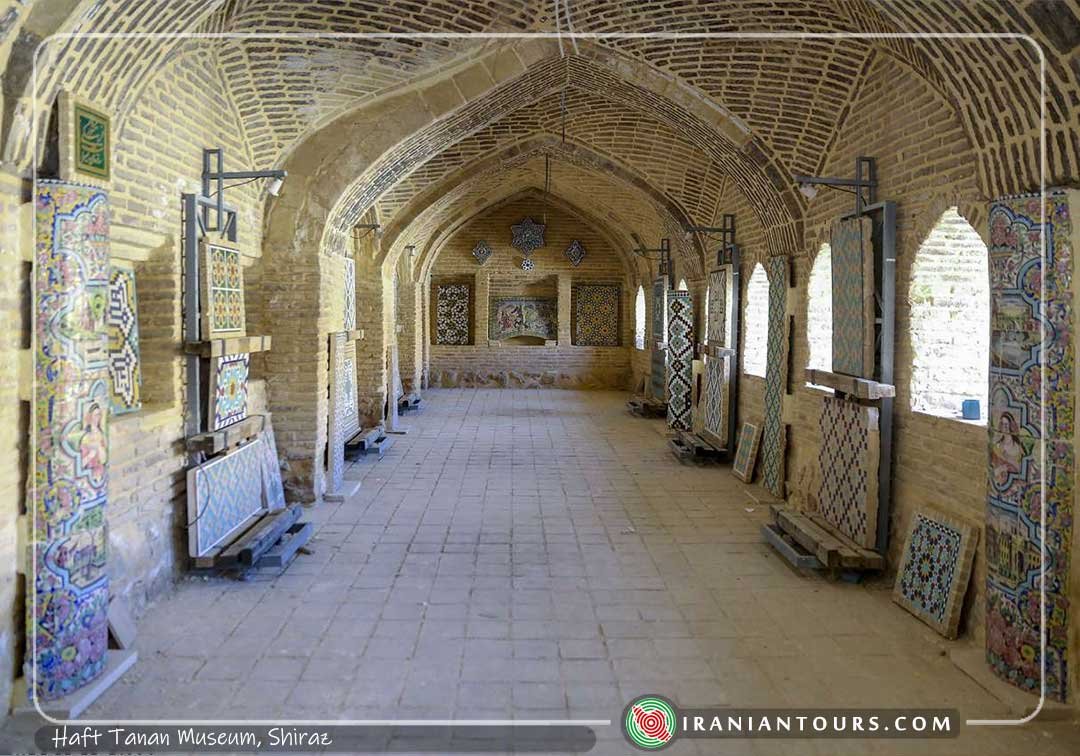Haft Tanan Museum
Literally, The Garden of The Seven Graves, Haft Tanan Museum is a walled garden from Zand era with a building to the north of the Tomb of Háfez on the slopes of a hill. The title is given to it is due to the existence there of the graves of seven ascetics and mystic. The part of special historic interest is an open-side hall, the roof of which is supported by two great monolithic columns. In the upper recesses of this building, there are five scenes painted in oil colours on plaster, which are in their way masterpieces of eighteenth-century painting. The first scene is of the religious mendicant (dervish) with a halberd, chain-suspended bowl, and white beard. The second is the prophet Moses tending his flock, who are busy grazing. The middle one shows a love scene between Sheikh San`an and a Christian girl. The Sheikh among his devotees is looking appealingly towards the girl, who is in the upper part of the picture. The fourth scene shows the prophet Abraham about to sacrifice his son Ishmael (according to the Muhammedan belief), and the fifth scene is that of a young ascetic.
Apart from these five scenes, delicate floral designs were painted on the walls and roof were decorated.
he walls of the hall have a skirting of lemon-coloured alabaster, brought from the marble mines of Tulumpusht near Yazd. The two columns resemble the two pairs of columns in the center of the colonnade facing the Tomb of Háfez, which were also decorated with floral patterns, much of which still remains.
Outside this place, one hundred meters to the west on a simple platform is the grave-stone of Shah Shujá`, the most famous sovereign of the Al-Muzaffar dynasty, eulogized by Háfez. The stone was prepared in the time and by the direction of Karím Khán, and placed on his grave, around which a garden was laid out, but this has since disappeared, and the ground is tilled by farmers.
When the forgotten and neglected grave of a king applauded by Háfez, which has become a world shrine, visited every day by countless people, the truth of this couplet of Háfez is confirmed:
« None dies, whose heart by love is everliving,
Clear proof of this the world`s archives are giving.»





